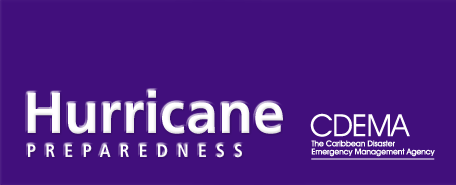Hurricane Tips for Your Businesses
Hurricanes can be costly! Millions of dollars have been spent in picking up the pieces after buildings were brutally destroyed because they were not well equipped to withstand the effects of a hurricane. Don’t wait! Invest time and money in adequately preparing all aspects of your business this hurricane season. Here are a few things you should remember to do.
Develop a Written Plan
Developing a written preparedness plan and training employees to implement it is critical. The following guidelines are provided to assist you in the development of your plan.
When you develop your written plan, make sure to address the following major areas:
- Make plans for the protection of plant and equipment.
- Develop a staffing policy that identifies essential employees and which of them, if any, must remain at the facility during the hurricane. The policy should identify when employees will be released from work as well as when they are expected to return. Businesses may predetermine that employees will return to work when employees are ordered to return, in case telephone service is out.
- Develop procedures and policies for all phases of hurricane operations:
- Identify and protect vital records such as accounts receivables, customer records, tax records, and other personnel and administrative documents.
- Review insurance policies to ensure that there is adequate coverage.
Questions to ask include:
- Is the facility in a high hazard, evacuation area?
- Does the insurance package include wind/storm coverage?
- Is the facility located in a flood prone area and is the flood insurance adequate?
- Does insurance cover damage to contents, including vital records and office equipment?
- Does the package include liability coverage for injury to employees as well as potential lawsuits from customers?
Before the Hurricane
- Compile an Emergency Contact List with 24-hour telephone contact numbers of essential employees.
- Identify vital records and make back-up copies and/or transfer them to microfilm. Identify a safe storage level area within the facility where records can be relocated, if necessary. This area should be above ground level and away from windows and exterior walls, which may leak. In a one-story facility, file cabinets and boxes may be placed on pallets up off the floor. Consider moving vital records off-site, particularly if the business is in a storm-surge vulnerable area.
- Determine responsibility for maintaining the facility. Ensure that the following items are addressed:
- Patch roofs and windows.
- Check security and flood lighting.
- Identify lightweight, loose items in outside storage areas that may be blown around in the wind.
- Identify emergency power requirements and determine if a generator is available. If the facility must be operational during a hurricane and a generator is not available, rent or purchase a generator. Test the generator monthly during the hurricane season.
- Determine if computer support will be available for primary/critical computer users who need to remain operational during a hurricane.
- Make sure that communications equipment is operational.
- Determine the type and amount of hurricane emergency supplies necessary. All hurricane emergency supplies should be clearly marked and stored in a secure area that is accessible in an emergency. Recommended supplies include:
- A battery-operated radio or TV (test reception in building).
- One flashlight per person working during the hurricane.
- Extra batteries for both radio and flashlights.
- First-Aid kit.
- Emergency tool kit, if necessary.
- Food and water supplies for staff assigned to the facility during the hurricane. Be sure to include needed utensils.
- Provide employees with hurricane preparedness information.
Hurricane Watch
- Secure all doors, windows and other openings against wind and water.
- Tie down or bring indoors any objects which may be blown about by hurricane winds. Install hurricane shutters, cover windows with boards or close drapes. If a room must be occupied during the hurricane and window protection is not available, windows may be crisscrossed with tape to slightly reduce flying glass. Remember though that tape will not stop the glass from breaking!
- Verify that vital records are in a safe storage area. Files, records and storage cabinets may be wrapped in plastic or water proof material for moisture protection. If necessary, temporarily relocate records to a safe storage facility off-site.
- Confirm availability of necessary computer support.
- Ensure that all vehicles are serviced and fuelled. Determine where they can be safely stored.
- Check hurricane emergency supplies and restock if necessary.
- Dismiss essential employees temporarily so they can secure their personal property before returning to duty.
Hurricane Warning
- Move desks, files, equipment and furniture away from windows. Papers, drawings, etc. should be placed inside files or desks. Wrap office equipment, such as copy machine and computers, in plastic to protect against water damage.
- Dismiss all non-essential personnel.
- Turn off all air conditioners, disconnect electrical equipment and turn off lights.
After the Hurricane
(When the all-clear has been announced)
- Assess basic damages at work site including roof, water, damage and broken windows.
- Begin clean-up of work-site.
- Do not turn on computer equipment if there are indications of low voltage power fluctuations, low air conditioning output, water under raised floor, broken windows or damaged equipment.
*When all the employees return to work as usual, have Human Resources or an onboard counsellor offer assistance of some kind if workers are experiencing any form of post traumatic stress.
|


























